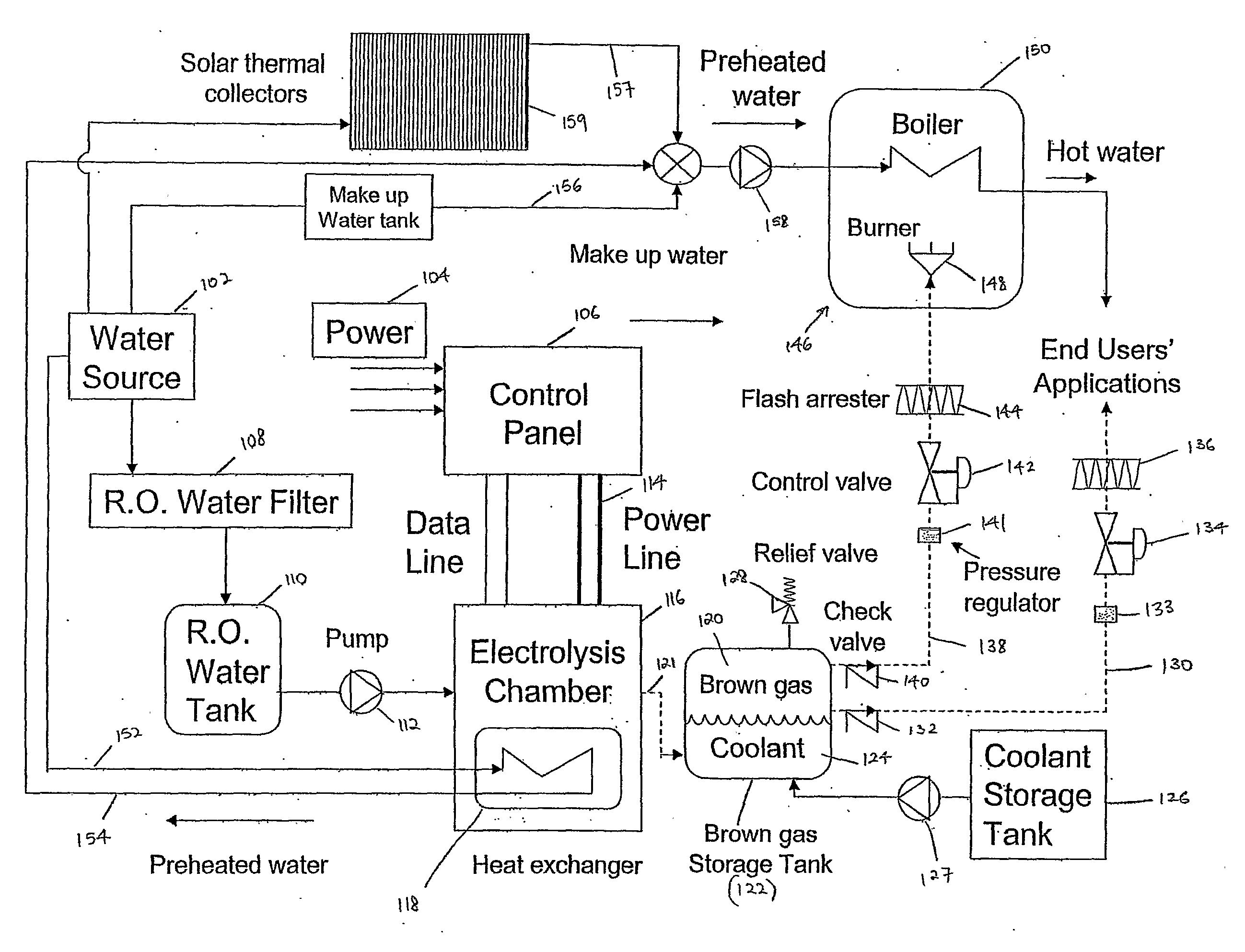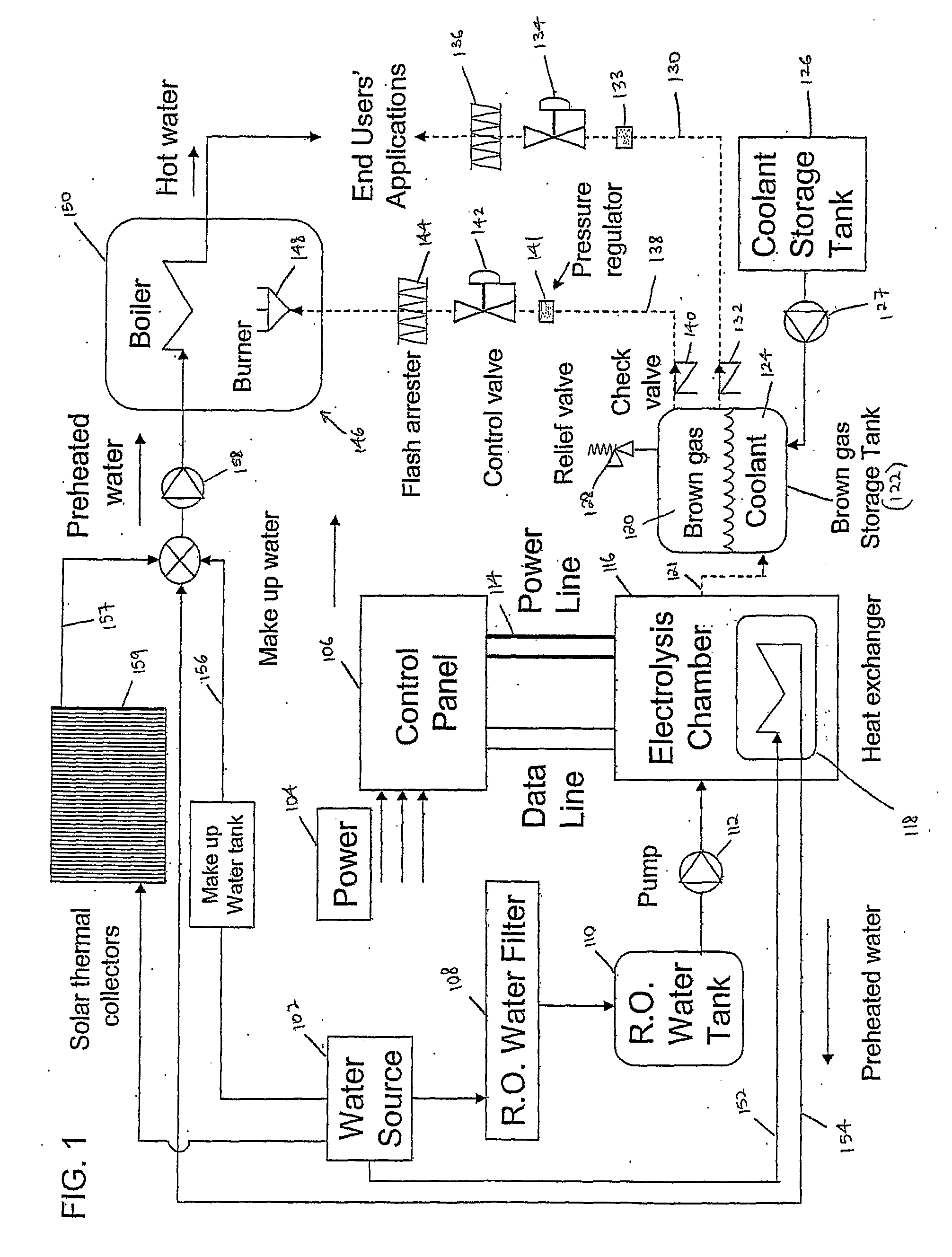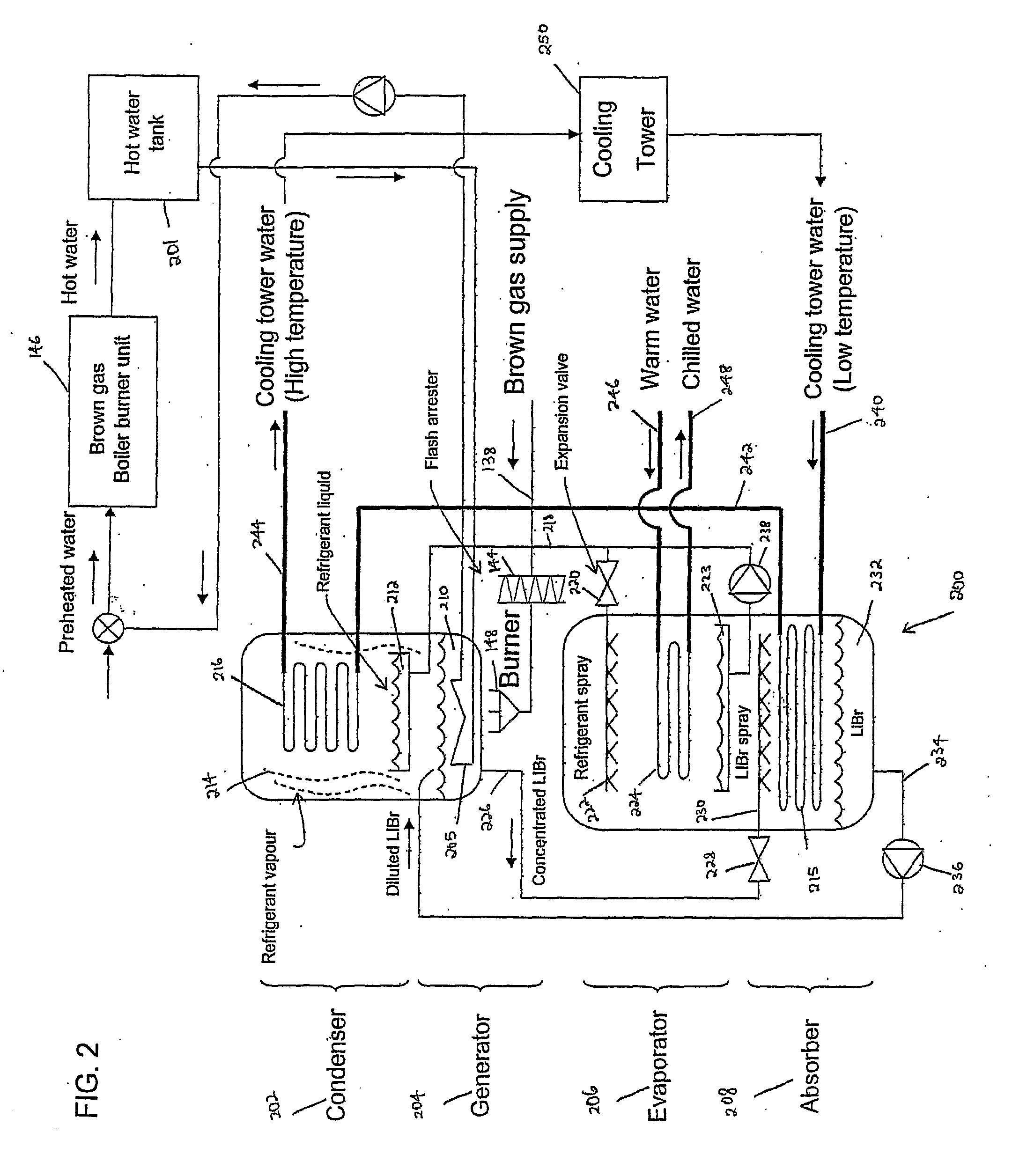System for generating brown gas and uses thereof
a technology of brown gas and system, applied in the direction of container/bottle construction, rigid containers, packaging goods, etc., can solve the problems of long-term economic viability and availability, network of exposed pipelines and terminals over a vast area, high risk of external influence, natural disaster or terrorist threat, etc., to achieve rapid quenching of flue gas, high volume, and rapid quenching
- Summary
- Abstract
- Description
- Claims
- Application Information
AI Technical Summary
Benefits of technology
Problems solved by technology
Method used
Image
Examples
Embodiment Construction
[0167]FIG. 1 shows a part of the isolated system of one embodiment of the present invention. In particular, FIG. 1 shows the generation of Brown's gas and the use of Brown's gas in a boiler and burner unit in an isolated system. Brown's gas is generated in a Brown's gas generator 116, one form being described in U.S. Pat. No. 4,081,656. The generator 116 may include an electrolysis chamber. An electricity supply 104 is connected to a control panel 106 which monitors and controls the operating parameters such as electricity supply to the generator 116 via power lines 114. There is also provided a water supply 102. The water supply 102 may be in the form of a water storage tank. Water from the water supply 102 is passed through a reverse osmosis (RO) water filter 108 and the filtered RO water is stored in a RO water tank 110. Water from the RO water tank 110 is fed into the generator 116 by means of a pump 112.
[0168]Consequently, the generator 116 takes in the RO water and electricity...
PUM
| Property | Measurement | Unit |
|---|---|---|
| particulate sizes | aaaaa | aaaaa |
| temperatures | aaaaa | aaaaa |
| temperature | aaaaa | aaaaa |
Abstract
Description
Claims
Application Information
 Login to View More
Login to View More - R&D
- Intellectual Property
- Life Sciences
- Materials
- Tech Scout
- Unparalleled Data Quality
- Higher Quality Content
- 60% Fewer Hallucinations
Browse by: Latest US Patents, China's latest patents, Technical Efficacy Thesaurus, Application Domain, Technology Topic, Popular Technical Reports.
© 2025 PatSnap. All rights reserved.Legal|Privacy policy|Modern Slavery Act Transparency Statement|Sitemap|About US| Contact US: help@patsnap.com



